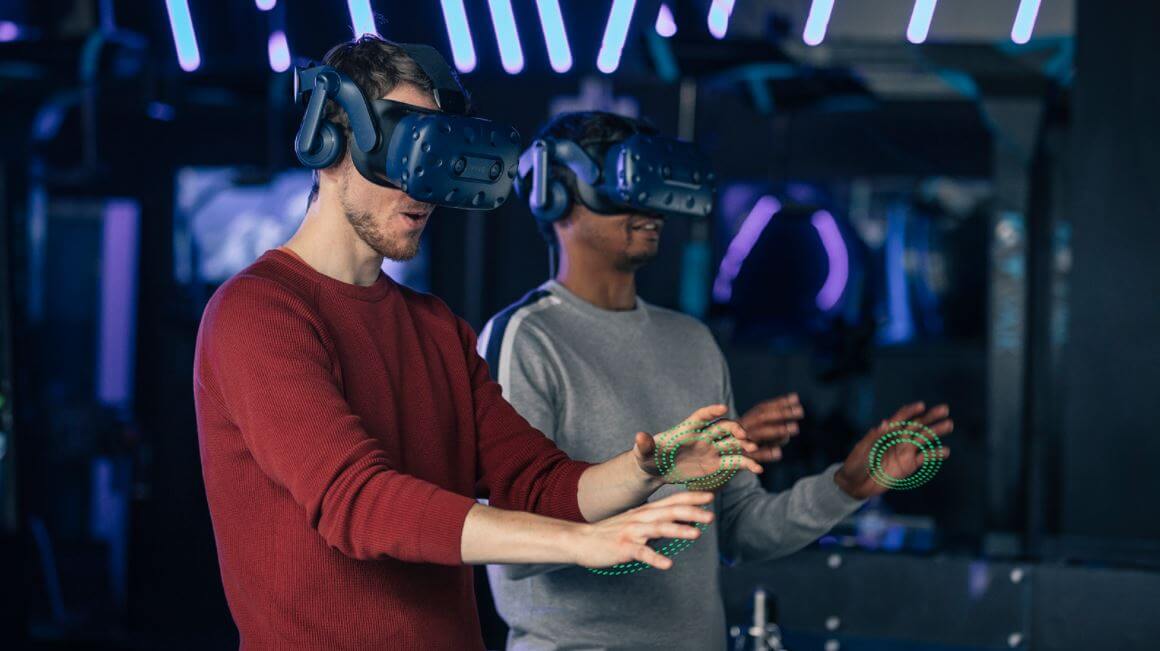Haptic means the sense of touch which anyone feels after touching someone or something. In the tech world, haptic refers to communication generated from interacting with computers through feedback science. Computers have the unique ability to provide motion force and vibrations, which increase the user experience in the long run.
Haptic technology combines both human and machine functioning. Machine functioning is initiated through real-time algorithms, actuators, sensors, and application program interfaces. The computer acts as the system’s brain and sends appropriate commands using the end effector to the human being.
Companies Investing in Haptic Technology
Few companies are at the forefront of inventing and developing haptic technology. They include:
Valkyrie Industries
The company is in the process of developing a haptic VR suit called the Iron Man V.1. The suit functions with electrical impulses, which stimulate human muscles initiating touch and resistance to the user. The company is mainly targeting the teleoperation sector.
Exiii Inc
The renowned tech company has invented a wearable haptic device called Exos. The device’s main aim is to enable the user to grasp, touch and hold virtual objects in the virtual space. The company is focusing on the manufacturing sector.
HaptX
The renowned US company has invented the Hapt X gloves. The gloves’ function using the microfluidic touch, which acts as the human touch. The wearable gloves come with a central control box, a tracker, and a VR headset. The company is focusing mainly on the manufacturing sector.
What’s Next for Haptic Technology
Advancements in haptic technology have given birth to wearable devices. While this is a big step into the future, it is not the end for technology innovation. In the future, we will see a shift from wearables to mid-air haptics and hand-held Haptics.
Haptic in gaming
Most games vibrate or emit certain vibrations depending on the action made, therefore this is not a new technique. Even while the top mobile casinos have yet to fully embrace virtual reality, its combination with haptics has the potential to transform the business, particularly in terms of mobile live casino games. Although live casino games were historically uncommon in South African mobile casino apps, more and more of the best mobile casinos have recently incorporated them. This means you can play against a real dealer on your mobile device, simulating a real-life casino experience.

Hand-held Haptics
Wireless Haptics is currently being used all over the world. However, the technology comes with numerous limitations and shortcomings, including limited hand movements, carrying the full weight of the device, and dealing with the complex wiring on the device. Hand-held Haptics is, however, here to our rescue.
Hand-held devices, unlike wearable ones, are practical and easy to use as you need to pick them up. The technology, however, requires a lot of expertise to develop. The devices need advanced virtual object senses, including thermal feedback, vibrotactile patterns, texture feedback, contact, softness, and skin stretch senses.
The renowned Microsoft company is among the few tech companies that have developed a hand-held haptic device. The scientists and engineers at Microsoft Research’s Redmond, WA Labs are calling the gadget CLAW.
CLAW is a hand-held haptic gadget whose main aim is to manipulate, touch and grasp virtual objects. The multi-functional controller has unique functionality abilities seeing that it can distinguish grips from different users, adapt to different haptic modes, and co-relate it with the virtual content.
The truth is this is among the few pieces of hand-held haptic technology that could be very helpful, especially in the industrial sector soon.
Mid-air Haptic Technology
Evolving from wireless Haptics to hand-held Haptics, mid-air haptic technology is undoubtedly the future. The tech, unlike its other forms, does not need any connection from physical devices to computers. Instead, it has the superior ability that allows you to use virtual objects to feel and touch.
The mid-air haptic technology works with the help of ultrasound waves. They are manipulated and compressed into unique invisible hotspots that the user can only feel. The technology is not only sophisticated but very expensive to develop and maintain. It is also faced with numerous shortcomings and limitations, including the tactile nature of virtual objects and the continuous disturbing sounds caused by ultra-waves. One of the few companies globally that are hopeful of developing a mid-air haptic device is the Ultraleap company launched in 2019 after a merger of Leap Motion and Ultra haptics.
The truth is we may not experience full adoption and application of haptic technology this year or next year. This is because of the high costs of the technology in terms of sophisticated hardware, increased processing power, and complex programming skills. However, with numerous sectors of the economy, including the gaming industry embracing haptic technology, we may see a significant acceptance and adoption rate come 2030.
Image Courtesy: www.ultraleap.com
